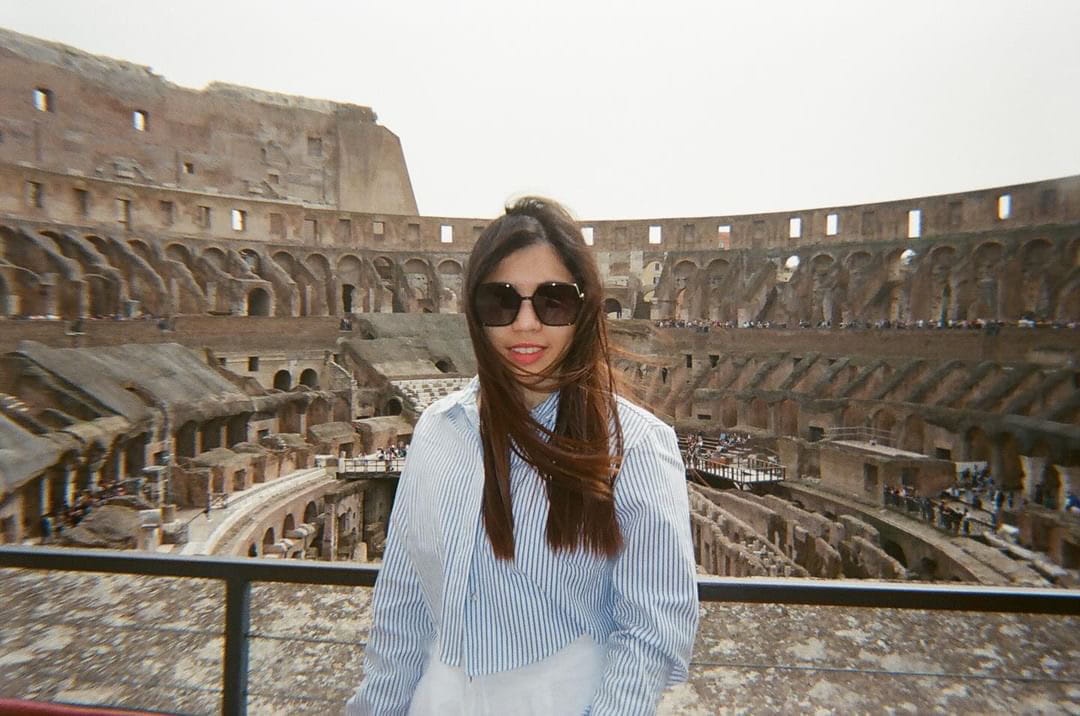Discovering Brutalism at Art Exchange

MA Curating students, Jou-Han Chen (Sophie) and Hiromi Horiuchi, interned at Art Exchange throughout the summer of 2024. Invigilating the summer show Brutal but Beautiful led them to develop fascinating insights into the university’s brutalist architecture.
In this blog post, they share what they learned from the exhibition and their own experiences on the Colchester Campus.
Hiromi's reflections on New Brutalism at Essex
Brutal but Beautiful at Art Exchange demonstrates how the university’s innovative goals are linked to the intentions of its founders and architects. This exhibition gave me a deeper appreciation of the campus, which is now part of my everyday life, and it provided a valuable opportunity to reflect on its architecture and history. The use of various media, such as blueprints, actual models, and photos of student movements and protests, made it easy to understand the connection between the history and architecture of the University of Essex. I felt that the exhibition content was accessible and engaging for people of all ages.
Honestly, without any prior knowledge of New Brutalism, I initially thought that the word "brutal" in the exhibition title referred to something "cruel." However, after seeing the exhibition, I was able to understand its true meaning in this context: founding Vice-Chancellor Sir Albert Sloman argued that the boundaries between subjects in traditional universities were artificial and intellectually limiting. Under his leadership, the University of Essex was conceived as a federation of overlapping research schools, challenging conventional ideas of higher education. The university was also shaped by New Brutalism, a modern architectural movement that began in the early 1950s.
The architectural models on display allowed me to appreciate the intricate connections between learning and living spaces that give the University of Essex a city and community feel. It was clear that this kind of urban development plan plays a key role in encouraging interdisciplinary research and allowing academic inquiry to flourish without being constrained by traditional boundaries. Indeed, I live in university accommodation and have met friends who are in completely different fields, which has greatly broadened my perspective.
The exhibition also features photographs of radical student protests, which I felt were a testament to the powerful combination of architecture and concept: demonstrating how physical space can shape and reflect the intellectual and social dynamics of a university. One of the reasons I applied to the University of Essex was its unconventional approach, the opportunities for student interaction across departments, and the beautiful campus environment. This exhibition demonstrated how the university's innovative teaching philosophy is deeply intertwined with its unique architecture and campus design, helping me connect my initial sensory motivations with the deeper psychological reasons for my application.
Another point of interest for me is that the architecture of the library resembles features of the Kagawa Prefectural Government Office, built in 1958 by Kenzo Tange. This office uses protruding cantilever beams to support the floor, an architectural style derived from traditional Japanese wooden architecture. When the old Kagawa Prefectural Office was destroyed during World War II, the governor at the time requested that the new office be designed "befitting a government office in the democratic era," and this can also be seen as a fusion of political meaning and architectural design. The library’s brutalist architecture encourages progressive thinking and likely contributes to creating a comfortable, high-quality study environment. This realization also allowed me to discover a connection between my country and the University of Essex, making my study time in the library even more meaningful.
Hiromi Horiuchi

MA Curating student Hiromi Horiuchi in Cappadocia, Turkey. Photo courtesy of Hiromi.
Jou-Han's reflections on the foundation of the University of Essex
August 2023 marked the beginning of my journey from Taiwan to the UK. I chose to study at the University of Essex for its spacious campus, modern and stylish architecture, and vibrant campus life. Having worked for nearly three years, I was eager to enjoy what might be my last experience of campus life. Essex’s rich array of student-run activities and clubs brings together students from different fields, regions, and age groups, providing ample networking opportunities.
Now, a year later, from the pre-sessional study to my master's course, I’ve lived within the university town. My accommodations have ranged from University Quays to South Towers and The Meadows. Living in student housing has been a blessing, with university management handling many potential tenant issues and ensuring security with guards on-site. The campus offers a library, gym, cafés, bars, and both Western and Chinese restaurants. Joining the music club granted me access to practice rooms and regular student performances at HEX on Fridays. Life at Essex allowed me to meet all my needs—food, clothing, housing, transportation, and entertainment—through walking. The friendships I’ve formed with students from around the world have made this year full of beautiful memories, closely tied to the campus and the people.
Through the detailed explanations of Curator Jess Twyman, I learned about the university’s construction concept and story. Inspired by Italian hill towns, the campus design ensures that every building is within a five-minute walk from the centre, fostering a strong sense of community. The five central squares of the campus, interconnected by snake-like Z-shaped stairs, symbolize the perfect connection between life and learning. This layout emphasizes building a community through the interconnected squares, much like the strong sense of community found in Italian hill towns. On campus, I deeply experience the "freedom" and "vibrancy" of the atmosphere. Walking to different department buildings allows me to meet friends from various majors, expanding my network and knowledge. The historical photos on display also show early students' artistic expressions, which are very interesting and experimental.
I also learned about the history of the university's funding. In its early days, alongside government funding, the local industry in the county of Essex raised about one million pounds, ensuring the university had ample funds to establish itself. However, things changed in the 1970s when constant student rebellions led the conservative government under Margaret Thatcher to withdraw funding. Additionally, the international oil crisis at the time resulted in less money circulating generally, contributing to the financial challenges when the funding tap was turned off.
From the 20th century to the 21st, we are fortunate to receive a comprehensive higher education at the University of Essex in a turbulent yet resource-rich present, enjoying complete and diverse services. I sincerely hope everyone will visit Art Exchange to explore the exhibits from the 1960s, immerse themselves in the history of building a university town, understand the architectural background, and cherish what we have today.
Jou-Han Chen (Sophie)

MA Curating student Jou-Han Chen at the Colosseum in Rome, Italy.
Don't miss Brutal but Beautiful at Art Exchange. The exhibition closes on 21 September 2024.


